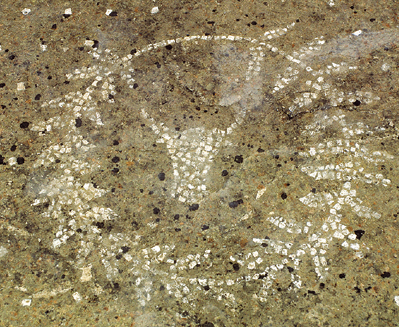Whence the Bull?
Sidebar to: Destinations: Punic Double Take

The bull’s-head mosaic pavement above lies at the entrance to a Punic house in Selinunte. At the entrance to another Punic house just a few doors away is a mosaic pavement with a depiction of the Punic goddess Tanit. Whereas the Tanit depiction is well known and well understood, the bull’s head appears to be unique in Punic iconography.
Bulls are common in religious iconography throughout the eastern Mediterranean and Near East, but none can be associated with this Punic example. Perhaps one of our “scholarly (or non-scholarly) readers” will know of some connection or be able to tell us what it means.
I have consulted several experts, none of whom knows of any similar Punic examples. Ephraim Stern, Israel’s foremost Phoenician and Punic authority, knows of nothing like it. Nor does Joseph Greene at Harvard’s Semitic Museum, who excavated at the major Punic site of Carthage in Tunisia. Greene said that if anyone knew, it would be Gioacchino Falsone at the University of Palermo in Sicily. I finally tracked him down in Syria, where he was digging at a site on the Euphrates River. He couldn’t help me either, but he suggested I try Paolo Xella in Rome. Xella referred me to Gioacchino Falsone, whom I had already talked to.
Already a library member? Log in here.
Institution user? Log in with your IP address.

